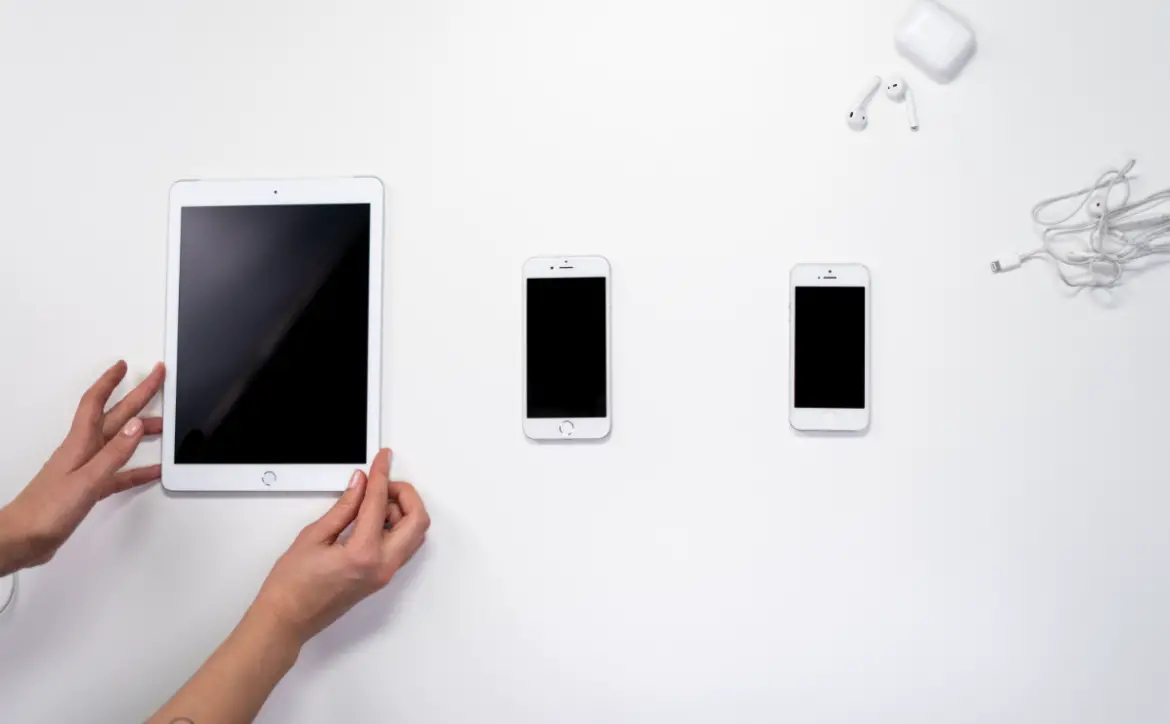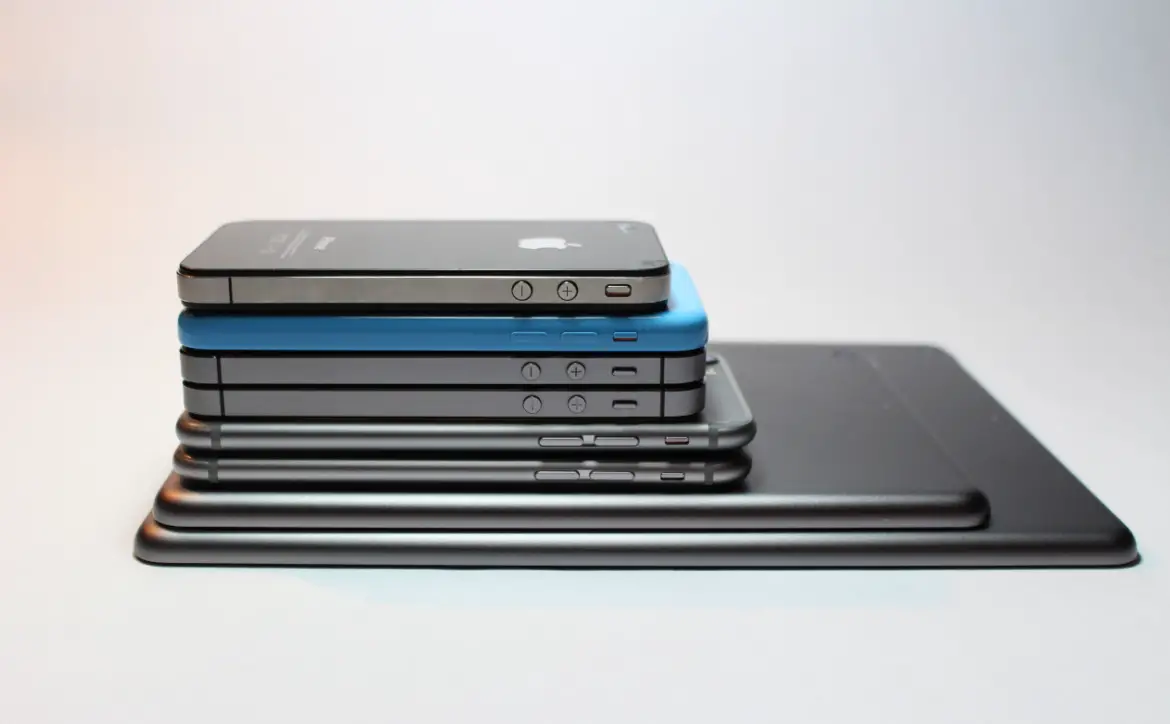iOS is the operating system for Apple’s iPhone smartphone. And until it was forked and received a name change to iPadOS, it was the software powering iPads, too.
Estimated reading time: 6 minutes
The operating system has undergone 15 major updates since its creation in 2007, and rumors about the 16th update have begun to spread. With more changes potentially on the way, let’s look back at the previous updates and remember how far iOS has come.
1. iOS 1
iOS’s first version officially launched on July 29, 2007, along with the first iPhone. Back then, Apple simply called the system iPhone OS.
Its most groundbreaking features included the multitouch screen, visual voicemail, and pre-installed apps such as Safari and Music. This first version paved the way for all touchscreen operating systems that would come after it.
2. iOS 2
After the first version’s overwhelming success, Apple released its first major update with the second version on July 11, 2008. The company chose this date to correspond with the release of its 3G iPhones.
iOS 2’s claim to fame was its introduction of the App Store, which had 500 third-party apps on the first day. The Maps application also greatly improved but most apps were still in their infancy and needed much more developer attention.
3. iOS 3
Apple continued to launch its updates at strategic times, releasing iOS 3 and its 3GS iPhone on June 17, 2009. The update added some essential tools, including Spotlight search, video recording, and the copy/paste functions. It also coincided with the first iPad, which came out shortly after the iOS 3.2 update.
Apps were also starting to improve and become more refined, giving users a better experience when using them.
4. iOS 4
A more thorough update than the first three, iOS 4 brought many of the qualities we still see in Apple devices today. Upon its release on June 22, 2010, all up-to-date iOS devices had the following new features:
- FaceTime
- AirPlay
- AirPrint
- iBooks
- Personal Hotspot
This 4th version also marked the name change from iPhone OS to the current moniker used today.

5. iOS 5
Apple continued working towards a completely wireless experience with the fifth iOS update on October 12, 2011. iCloud, iMessage, and Notification Center burst onto the scene and left older, incompatible Apple devices behind. Instead of a wired connection, you could now sync your device with iTunes via Wi-Fi.
6. iOS 6
The first controversial update came with iOS 6 on September 19, 2012. Apple ambitiously launched its own Maps application and the first version of Siri, both of which had major bugs. However, iOS 6 also introduced the Do Not Disturb feature and the Wallet app, which proved successful.
7. iOS 7
Apple took things in a different direction with iOS 7, adding some significant features and making a complete design overhaul. Upon its release on September 18, 2013, some users found the fonts too small and animations too overwhelming. After the initial outcry, critics realized the new features were quite beneficial. These included:
- Activation Lock
- AirDrop
- CarPlay
- Control Center
- Touch ID
At this point, Apple began to phase out more of its older devices.
8. iOS 8
iOS 8 saw a return to normalcy with more essential additions. Its release on September 17, 2014, introduced the following new features:
- Apple Music
- Apple Pay
- iCloud Drive
- iCloud Photo and Music libraries
- Family Sharing
- Handoff
- HomeKit
- Third-party keyboards
iOS 8’s release marked the end of support for the iPhone 4 and all devices before it.
9. iOS 9
The 2017 update didn’t include many new features, but it worked out some issues that had plagued Apple for years. It added Low Power Mode and Night Shift, which significantly improved battery life. Maps and Siri were also perfected. It laid the groundwork for the next two updates.
10. iOS 10
iOS 10’s launch on September 13, 2016, made waves because it finally allowed users to delete pre-installed apps. But other features are also worth mentioning. Apps could work together to perform a task with only one app technically open, and iMessage also had built-in applications.
These changes made the iOS experience more customizable, which had been a huge criticism of the updates beforehand.
11. iOS 11
iOS 11 made iPads more relevant, turning the Pro series tablets into legitimate replacements for laptops and rejuvenating the product as a whole. Upon its release on September 19, 2017, iPads could now do the following:
- Drag and drop support
- Split-screen apps
- File browser app
- Apple Pencil support
The iPhone also saw improvements with AirPlay 2 and augmented reality (AR). It’s the oldest update that today’s Apple devices still support.

12. iOS 12
Launched on September 17, 2008, iOS 12 made some improvements to pre-existing features with Siri Shortcuts and ARKit 2. It made notifications more manageable with Group Notifications and enabled parents to monitor their children’s activity with Screen Time.
New tools like the Measure app also allowed users to make complex measurements and calculations straight from their mobile devices — an improvement that changed the game for both everyday users and business professionals in applications like signage and construction.
13. iOS 13
iOS 13’s release date of September 19, 2019, marked a split between iPhones and iPads. While iPhones got the iOS 13 update, iPads got their own new operating system called iPadOS. However, both updates had similar features:
- Sign-in with Apple user account system
- Enhanced privacy and security features
- Dark Mode
- Portrait Lighting
- Look Around (360-degree street view on Apple Maps)
- New Siri voice
14. iOS 14
By the time September 17, 2020, rolled around, COVID-19 was in full swing and Apple’s developers responded with some helpful adjustments. Here are all of the noteworthy additions of the 14th major update:
- Home Screen widgets
- Smart Stacks
- App Libary
- App Clips
- Translation of 11 languages
- Spatial audio for AirPods
- Phone and FaceTime calls take up less screen space
- Threaded replies and mentions in iMessages
- Improved privacy controls
15. iOS 15
Last but not least, iOS 15 launched on September 15, 2021. It built on the previous update and made some prudent changes in response to the shift towards remote work due to COVID-19. FaceTime and privacy settings saw the greatest improvements:
- SharePlay
- Spatial Audio
- Enhanced microphone
- Portrait Mode
- Cross-platform support
- Live Text
- Visual Search
- App Privacy Report
- Mail Privacy Protection
- Maps, Safari, and Health app redesigns
iOS 16 Rumors
Based on previous timelines, Apple should announce a launch date for iOS 16 at the Worldwide Developers Conference (WWDC) in June and release a beta version during the summer. Many of the rumored changes revolve around optimizing FaceTime and adding new widgets to the home screen. However, nothing is certain – and Apple CEO Tim Cook has kept quiet in recent months. iOS 16 may build upon iOS 15’s remote-friendly features, but we won’t know until we see it.
What do you think of the history of Apple’s iPhone operating system? Are you a fan of the iPhone or are you on the Android side? Or are you possibly heading towards something other than the big tech options? Please share your thoughts on any of the social media pages listed below. You can also comment on our MeWe page by joining the MeWe social network.










